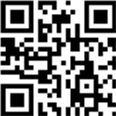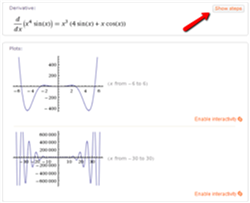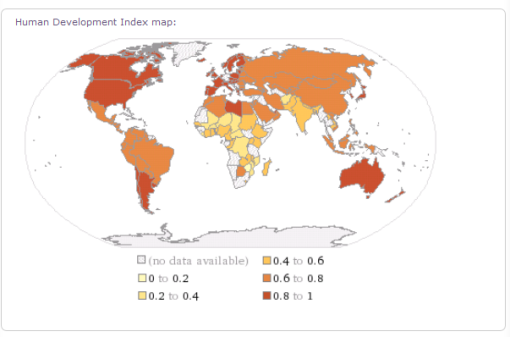Wolfram|Alpha, the Semantic Web at its best
Jean-Luc Trussart, technical academic advisor at Cégep régional de Lanaudière à L’Assomption, explores the pedagogical potential and impact of the Wolfram|Alpha computational knowledge engine and the semantic Web. He reviews the rise of the Internet and its impact on teaching and learning by giving examples of pedagogical applications of the Wolfram|Alpha engine, while identifying the issues involved in the classroom integration of this toolkit.
Table of Contents
The Issue
The Internet has become omnipresent in college network classrooms, and the amount of information available is constantly on the increase. Central to this trend are semantic Web applications that attempt to automate the organization and presentation of data by using algorithms that are products of human imagination. Such innovations help users to better understand the semantics (meaning) of information.
The Wolfram|Alpha computational knowledge engine, launched in 2009 by the mathematician Stephen Wolfram, well represents the basic characteristics of this concept. It allows the user to rapidly obtain a factual summary of a concept, an equation, or a fact; it establishes relationships among the data that have been found; and it suggests a list of credible sources in support of its analysis. Although the service is currently available only in English, translation of the service into other languages including French is being planned.
College-level pedagogical integration of a toolkit such as this inevitably has an impact on teaching methods and student learning strategies. With a brief overview of the past and current implications of the rise of the Internet, how teaching and learning are affected by the use of semantic Web tools in the classroom is explored here first. I then consider the advantages, teaching applications, and challenges related to the semantic Web, using the specific example of the Wolfram|Alpha computational knowledge engine.
The Rise of the Internet’s Effect on the Classroom
Before I detail the teaching potential of the semantic Web, it is useful to retrace the main past and current classroom impacts of the Internet. This non-exhaustive historical overview attempts to contextualize the emergence of the semantic Web in relation to teaching and learning. It does not pretend to provide a complete analysis of how it has affected each period.
The Information Web
The appearance of search engines (Altavista, 1995; Yahoo, 1995; and Google, 1998) has created a “web of information” in which each content item was organized by means of links and hyperlinks. The Internet provided students with instant access to content originating from anywhere in the world, and in any language desired. The sheer amount of information enables the teacher to assign learning activities involving research and press reviews in order to help students develop competencies in the research, selection, organization, and presentation of information.
The Collaborative Web
At the beginning of the 2000s, the emergence of the social networks (MySpace, 2003; Linkedin, 2003; and Facebook, 2004) and the blogs/microblogs (WordPress, 2001; and Twitter, 2006) enabled surfers to exchange, interact, share, and easily publish content on the Web without any prior knowledge of programming. In addition, collaborative sites such as online encyclopedia (Wikipedia, 2001), sites for sharing (YouTube, 2005), or social bookmarking pages (Delicious, 2003; Digg, 2004; and Diigo, 2006) made it possible to list the resources of Web 1.0. At the pedagogical level, the social networks made Web publication more democratic, they connected the classroom to the outside world, and they facilitated tele-collaboration among students. Students were thus able to share their creations and obtain feedback from teachers, peers, or the public on the assignments they did.

Figure 1 – Rich Site Summary (RSS) icon (source : Wikipedia)
The Semantic Web
The semantic Web can be defined by its provision of information relationships so as to enable computers to understand the semantics (the meaning) of information. Data are organized by humans or by computer using automated means. The computer is given the task of associating, processing, and publishing information as well as enabling users to publish the information by means of a personalized and structured presentation. Thus, one can identify two types of computerized processes: aggregation (compiling) and content or data curation. Aggregation of content consists of subscribing to a variety of information sources organized automatically by means of a data source. Rich Site Summary (RSS) readers (Google Reader, 2005; and Netvibes, 2005) or the computational knowledge engine Wolfram|Alpha are involved in this type of automated processing of data. Data curation is a practice that involves selection, editing, and sharing of Web content that is most relevant to a request or a given subject. Curation services (Scoop.it, 2009 and Pearltrees, 2008) enable the curator to reorganize content selections related to a theme or subject and to offer it to readers. In class, the semantic Web allows the student and the teacher, by means of a computer, to access groupings of data organized from various sources. In this way, teachers can validate the credibility of aggregated content or that of the aggregator, and in turn carry out their own aggregation or data curation based on relevant sources.
The Real World Internet
This evolution of the Web represents the extension of the Internet to things and to locations in the real world. Such expansion and extension of the Internet makes it possible to generate an “augmented reality” by linking codes or URL addresses to objects and locations. Information stocked in the codes can be processed by mobile wireless devices. For example, the QR codes, an abbreviation for Quick Response codes (1999), are two dimensional, which makes it possible to compile text or links. Sensors (GPS, sensorials, or others) installed on individuals of a species or in a territory make it possible to transmit data that can be processed and organized by computer systems. This access to data in real time enables a student to better envisage realties and concepts seen in class. For teachers, these new tools enable them to plan demonstrations that are more contextualized and more efficient.

Figure 2 – QR code for the URL of the English Wikipedia Mobile main page (source : Wikipedia)
Pedagogical Advantages and Methods of Going to the Semantic Web
Semantic Web tools offer a number of pedagogical advantages for both student and teacher. The following sections will identify the potential pedagogical in-class uses of the semantic Web.
Accessing quality information easily and rapidly
First of all, the user has instantaneous access to a factual and organized base of knowledge along with a mediagraphy of credible sources. Such accessibility reduces search time and the time required to organize information so as to allow each user to move on more rapidly to analysis and interpretation of data.
Activating more complex learning
By means of available data, the teacher can help a student develop more complex cognitive skills and to concentrate on giving the students tools for processing information. Evaluation of learning can better focus on skills involving analysis, creation, and evaluation. Once equipped with tools such as Wolfram|Alpha, teachers can look ahead to adapting learning and evaluation activities that once were based on memorization or understanding skills.
Making learning concrete
Making connections among data by means of computerized tools also makes it possible for the student to better visualize abstract concepts. Visual and dynamic display of data by means of graphics, diagrams, images, or tables enables students to conceptualize concepts or data that may have originally seemed quite abstract to them. These tools also enable teachers to easily obtain visual aids to support their teaching.

Figure 3 – Phase diagram and 3D representation of a methane molecule (source : Wolfram|Alpha)
Making connections
Finally, this toolkit enables students to analyze the results generated and associated by their research in order to establish connections, compare data, or to identify trends. The toolkit has already established some such links (comparison, correlation, cause and effect) among the data. For example, you can compare some buildings (Buji Khalifa with the Empire State Building) or two Canadian statistical indicators (the GDP and the HDI).

Figure 4 – Comparison of the Gross Domestic Product (GDP) and the Human Development Index (HDI) of Canada (source : Wolfram|Alpha)
Practical Applications
Pedagogical applications
The following section allows the reader to explore some examples of pedagogical opportunities offered by the Wolfram|Alpha toolkit. To do so, I will detail specific cases of the results of applied research in a variety of disciplines. This will make it possible to identify the types of knowledge that are accessible as well as potential pedagogical applications. Note that the examples selected are intended to provide an overview of some of the functionalities of this toolkit, and they demonstrate only a tiny number of its possibilities. In order to appreciate all of the available functionalities, the reader is strongly encouraged to consult the extensive list of examples available on the Wolfram|Alpha site.
Mathematics
In mathematics, entering a derivative or an algebraic equation allows the student to access a graphic representation, steps in the solution, alternative forms, and numerical roots, to name only these. The computational information engine is also able to solve equations automatically. Thus, students can quickly obtain everything they need to check the problems assigned by the teacher and to focus on understanding the procedures involved rather worrying merely about the answer.

Figure 5 – Derivatives of a function with display of the graphs and the steps in the solution (source : Wolfram|Alpha)
Sciences
In the sciences, the student can access a structured application of theoretical principles. For example, in physics, equations underlying a concept and the relations between the different variables are automatically displayed. In biology, the taxonomy of a species and its characteristics are available. Finally, in chemistry, images of molecules or the solution of chemical equations can be generated. The tool enables students to have a concrete picture of more abstract concepts presented by the teacher.

Figure 6 – Solution of a chemical equation (source : Wolfram|Alpha)
Social Sciences
Wolfram|Alpha can also provide statistics and usable data for all the disciplines in this field of study. For example, you can display the portrait, current state, and change in a stockmarket index, an economic indicator, a statistical indicator, or even an international organization. Each datum can be compared with another similar datum using the same toolkit. Up-to-date factual data along with a related mediagraphy can round out the information available in the encyclopedia.

Figure 7 – Dynamic “living” map of the Human Development Index (source : Wolfram|Alpha)
Languages
Even though the toolkit is currently available only in English, a word search will give you that word’s definition, pronunciation, origin, and historical use frequency, as well as words of the same family, its lexical field, and finally crossword puzzle questions associated with it. It is also possible to enter a number of words, a page, or a paragraph in order to find the length of the text in characters or in pages, and approximate reading and writing times.

Figure 8 – Historical use frequency of the word “Ski” (source : Wolfram|Alpha)

Figure 9 – Results of the search “2000 words” (source : Wolfram|Alpha)
Arts
With Wolfram|Alpha it is also possible to describe a colour by listing its different representations (RGB, Hex, HTML, Pantone…), its position in the chromatic circle, its use in the logos of well-known companies, and its related colours, as well as its position in the colour spectrum. It is also possible to obtain information relative to the identification of a stage play—its structure (number of acts, scenes, characters, sentences), number of words, most frequently used words or expressions, comparative weighting of each character’s speech, their number of appearances, and comparative length of each act.

Figure 10 – Appearance frequency of characters in the play Macbeth (source : Wolfram|Alpha)
Issues
Confronted with a computational knowledge toolkit of this kind, teachers often simply react by blocking student access to the site using available filters. Unfortunately these filters are easily circumvented, and it is difficult to block tertiary applications on mobile devices or on the students’ personal computers. As with the social media, it seems wiser to educate students on how to use these tools and devices effectively rather than to prohibit their use in the classroom.
Instant access to Wolfram|Alpha organized search results can benefit student learning. In effect, tasks related to acquiring and using knowledge can prove to be more rapid and efficient by instant access to semantically organized computational information. However, this advantage can diminish or even become a hindrance in the context of learning evaluation. Evaluation of declarative knowledge (for example, to define a concept) and of some procedural understandings (for example, to describe the steps in the solution of a problem) are difficult to adapt to this kind of toolkit. On the other hand, they are useful in evaluating competencies in that they enable students to access declarative understandings and a relevant mediagraphy. The teacher will have to think about the possible adaptation of these evaluation activities in order to benefit from the Wolfram toolkit rather than to feel threatened by it.
In order to adapt to this new reality, the teacher could suggest learning and evaluation activities centered on student motivation or active learning, and progressively make the cognitive level of the assignments more complex, providing a challenge that is adapted to the student. Thus, by using more elevated taxonomic levels (to evaluate and to create instead of memorizing or understanding), the teacher could motivate the student to apply the knowledge and knowhow generated by the toolkit instead of having them validate the acquisition of understandings or indeed assigning the solution of complex problems adapted to the student’s level.
A computational toolkit also influences the student’s informational competencies and the research approaches used. Students have the task of effectively applying their competencies in order to maximize the use of the toolkit. Although the toolkit can accelerate the procedures of searching, selecting, processing, and organizing information, students must themselves be able to establish the meaning of data so as to assimilate them. Teachers can draw on the skills of the ICT Profile in order to prepare students to use the toolkit properly in order to develop the informational competencies involved in searching, processing, organizing, and presenting of information.
Finally, studies of the “C” generation attest to the increasing use of mobile devices by students. The entry into the classroom of smart phones, tablets, and other devices means that access to semantic Web tools is on the rise. Students most likely will themselves have integrated these tools into the classroom, well before teachers have had time to adapt their teaching practices to them.
Conclusion
The semantic Web and its tools provide an interesting opportunity for teachers in a number of disciplines. I have identified here some of the impacts on the classroom of the emergence of the Internet, specifically a computational knowledge toolkit like Wolfram|Alpha. I have also shown that the classroom integration of a toolkit must be carefully planned if it is to serve students effectively, support the development of student competencies, and promote student success. Teachers will have to carefully consider the relevance and effectiveness of the pedagogical activities they assign to their students so as to properly integrate such tools. To do so, I have made several suggestions here. Teachers could also pay attention to IT integration already available and consult their academic tech advisors as needed. Good luck with your experimentation!
This translation was funded by the Canada-Québec Agreement for Minority-Language Education and Second Language Instruction.
Useful References
- Vitrine technologie-éducation. “Le Web 3.0, Web sémantique?” (Podcast) http://ntic.org/reseau-tic/episode-31-decouverte/ [August 23, 2012]
Podcast detailing the opportunities for education offered by the semantic Web - Wolfram, Stephen. Wolfram|Alpha Personal Analytics for Facebook http://blog.wolframalpha.com/2012/08/30/wolframalpha-personal-analytics-for-facebook/ [September 9, 2012]
Stephen Wolfram presents the personal analysis function for the purpose of processing Facebook profiles. With this article, the Wolfram|Alpha creator demonstrates the scope and diversity of data processing of which the toolkit is capable. - World Wide Web Consortium (W3C). Semantic Web http://www.w3.org/standards/semanticweb/ [August 23, 2012]
The W3C has the mission to develop the full potential of the Web. To do so, it establishes standards for developers and suggests some guiding principles. The semantic Web is an integral part of the vision of this organization in regard to managing data and Web services. Even though this page is quite technical, it enables the reader to identify the principles underlying the concept of the semantic Web.
Reference suggested by the Centre de documentation collégiale
- Focus. WTF is the semantic Web and why should we care. (Infographie) http://www.un-a-un.com/wp-content/uploads/2011/03/semantics.jpg [August 29, 2012]

